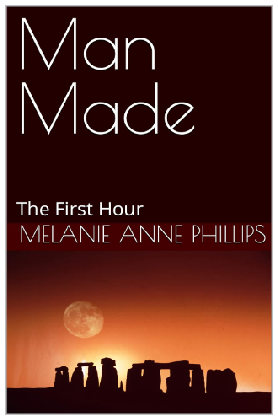|
For Story Structure |
|
For Story Development |
|
|

|
|

|
Novice Writers |
Creative Writing |

Too many writers fall into the trap of making Structure their Story God. There's no denying that structure is important, but paying too much attention to structure can destroy your story.
We have all seen movies and read novels that feel like "paint by numbers" creations. Sure, they hit all the marks and cover all the expected relationships, but they seem stilted, uninspired, contrived, and lifeless.
The authors of such pedestrian fare are Story Mechanics. A Story Mechanic is a writer who constructs a story as if it were a machine. Starting with a blueprint, the writer gathers the necessary dramatic components, assembles the gears and pulleys, tightens all the structural nuts and bolts, and then tries to make the story interesting with a fancy paint job.
But there is another kind of writer who creates a different kind of story. These Story Weavers begin with subjects or concepts about which they are passionate and let the structure suggest itself from the material. They see their players as people before they consider them as characters. Events are happenings before they become plot. Values precede theme and the story develops a world before it develops a genre.
A book or movie written by a Story Weaver is involving, riveting, and compelling. It captures the fullness of human emotion, and captivates the mind.
Although some writers are natural born StoryWeavers, there is still hope for the rest of us. In fact, you can become a StoryWeaver just by practicing a few select techniques until they become second nature.
First, clear your mind of any thoughts about characters, plot, theme, and genre. Avoid any consideration of character arc, hero's journey, acts, scenes, sequences, beats, messages, premises, settings, atmosphere, and formulas. In short -
Now work to create a world in which people live and interact, things happen, meaning can be found and the environment is intriguing. To do this, we'll progress through four different stages of story creation: Inspiration, Development, Exposition, and Storytelling.
Stage One -
Inspiration can come from many sources: a conversation overheard at a coffee shop, a newspaper article, or a personal experience to name a few. And, inspiration can also take many forms: a snippet of dialogue, a bit of action, a clever concept, and so on.
If you can't think of a story idea to save your life, there are a few things you can do to goose the Muse.
First of all, consider your creative time. Some people consistently find inspiration in the morning, others in the afternoon, evening or even in the dead of night. Some people are more creative in the summer and can't write worth a darn in the other three seasons. There are authors who work in cycles and those who come up with ideas in spurts. The key to using your creative time is to keep a log of your most fertile moments and then plan ahead to keep that kind of time open for further inspirations.
And don't neglect your creative space either. There are authors who go off to a mountain cabin to write. Some like lots of noise or babble, like a city street below their open window or an all-
Open yourself to different writing media. If you only use a desktop computer, try a laptop, a palm organizer with a folding keyboard, long hand on a pad, or a digital voice recorder. And don't be afraid to switch around any of these from time to time and mood to mood.
If you still can't come up with an idea, try the Synthesis Technique. In brief, you want to subject yourself to two disparate sources of information. For example, put a talk radio program on while reading a magazine or watching television and let the odd juxtaposition spur your notions.
Finally, if all else fails, try using Nonsense Words. Just jot down three random words, such as "Red Ground Rover." Then, write as many different explanations as you can for what that phrase might mean. For example, Red Ground Rover might be:
1. A red dog named rover whose legs are so short his belly rubs the ground.
2. The Martian Rover space vehicle on the red planet's surface.
3. Fresh hamburger made from dog
Your list might go on and on. Now most of these potential meanings might be pure rubbish, but occasionally a good idea can surface. If the first three words don't work, try three different ones. And, in the end, even if you don't find an idea directly from your explanations of each phrase, you'll have so stocked the creative spirit that you will find yourself far more prone to inspiration than before you started the exercise.
Use these inspiration techniques to come up with a log line for your story. A log line is simply a one-
A sample log line might be, "The marshal in an old western town struggles to stop a gang that is bleeding the town dry."
Stage Two -
Once you've been inspired enough to create a log line, you can move into the second stage of Story Weaving: Development. Here is where you take your basic concept and flesh it out with lots more detail.
In Development you'll begin to populate your story with people you might like to write about, work out some of the things that will happen in your story, and establish the world or environment in which it takes place. These efforts will ultimately result in your characters, plot, theme, and genre.
There are many Story Weaving techniques for the Development stage, but one of the most powerful is to project your world beyond what is specifically stated in the log line.
As an example, let's use the log line from above: "The marshal in an old western town struggles to stop a gang that is bleeding the town dry." Now let's see how we can expand that world to create a whole group of people who grow out of the story, some of whom will ultimately become our characters.
The only specifically called-
Range a little wider now and list some characters that aren't necessarily expected, but wouldn't seem particularly out of place in such a story.
Example: A saloon girl, a bartender, blacksmith, rancher, preacher, schoolteacher, etc.
Now, let yourself go a bit and list a number of characters that would seem somewhat out of place but still explainable in such a story.
Example: A troupe of traveling acrobats, Ulysses S. Grant, a Prussian Duke, a bird watcher.
Finally, pull out all the stops and list some completely inappropriate characters that would take a heap of explaining to your reader/audience if they showed up in your story.
Example: Richard Nixon, Martians, the Ghost of Julius Caesar
Although you'll likely discard these characters, just the process of coming up with them can lead to new ideas and directions for your story.
For example, the town marshal might become more interesting if he was a history buff, specifically reading about the Roman Empire. In his first run-
This same kind of approach can be applied to your log line to generate the events that will happen in your story, the values you will explore, and the nature of your story's world (which will become your genre).
Stage Three -
The third stage of Story Weaving is to lay out an Exposition Plan for your story. By the time you complete the Development Stage, you will probably have a pretty good idea what your story is about. But your audience knows nothing of it -
Of course, you could just write, "My story's goal is to rid the town of the gang that is bleeding it dry. The marshal is the protagonist, and he ultimately succeeds, but at great personal cost."
Sure, it's a story, but not a very interesting one. If you were to unfold your story in this perfunctory style, you'd have a complete story that felt just like that "paint by numbers" picture we encountered earlier.
Part of what gives a story life is the manner in which story points are revealed, revisited throughout the story, played against each other and blended together, much as a master painter will blend colors, edges, shapes and shadows.
As an example, let's create an Exposition Plan to reveal a story's goal. Sometimes a goal is spelled out right at the beginning, such as a meeting in which a general tells a special strike unit that terrorists have kidnapped a senator’s daughter and they must rescue her.
Other times, the goal is hidden behind an apparent goal. So, if your story had used the scene described above, it might turn out that it was really just a cover story and, in fact, the supposed "daughter" was actually an agent who was assigned to identify and kill a double agent working on the strike team.
Goals may also be revealed slowly, such as in The Godfather, where it takes the entire film to realize that the goal is to keep the family alive by replacing the aging Don with a younger member of the family.
Further, in The Godfather, as in many Alfred Hitchcock films, the goal is not nearly as important as the chase or the inside information or the thematic atmosphere. So don't feel obligated to elevate every story point to the same level.
Let your imagination run wild. Jot down as many instances as come to mind in which the particular story point comes into play. Such events, moments or scenarios enrich a story and add passion to a perfunctory telling of the tale.
One of the best ways to do this is to consider how each story point might affect other story points. For example, each character sees the overall goal as a step in helping them accomplish their personal goals. So, why not create a scenario where a character wistfully describes his personal goal to another character while sitting around a campfire? He can explain how achievement of the overall story goal will help him get what he personally wants.
An example of this is in the John Wayne classic movie, The Searchers. John Wayne's character asks an old, mentally slow friend to help search for the missing girl. Finding the girl is the overall goal. The friend has a personal goal: he tells Wayne that he just wants a roof over his head and a rocking chair by the fire. This character sees his participation in the effort to achieve the goal as the means of obtaining something for which he has personally longed.
Stage Four -
By the time you've created an Exposition Plan for each story point you worked on in the Development phase, you'll have assembled a huge number of events, moments, and scenarios. There's only one thing left to do: tell your story!
Storytelling is a multi-
Later in this book we’ll explore a number of different storytelling techniques in great detail. But in this introduction to StoryWeaving I want to address the primary storytelling problem writers encounter – a passionless presentation of what would otherwise be an intriguing story.
Story Mechanics often get stuck at this point in story development. They are so taken with the "perfect" structure they have created, they tend to anguish over the opening sentence when finally sitting down to write the story. Eventually, after writing with the problem for far too long, they write one great line and then become so intimidated by its grandeur they are afraid to write anything else lest it not measure up to that initial quality!
Fact is, you're only as good as your own talent -
Another common problem is the inability to let loose, emotionally. Each of us is born a passionate human being. But we quickly learn that the world does not appreciate all our emotional expressions. In no time, we develop a whole bag of behaviors that don't truly reflect who we really are. But, they do help us get by.
Problem is, these false presentations of our selves appear to be our real selves to everyone else. They cause others to give us presents we don't really want, drive us to make friendships with people we don't really like, and even marry people we don't really love!
This false life we develop is a mask, but by no means is it always a well-
So instead, we just tighten the mask down so hard it becomes an exoskeleton, part of what we call "ourselves." In fact, after a time, we forget we are even wearing a mask. We come to believe that this is who we really are.
Now, try getting in touch with your passions through that! The mask dampens any emotional energy we have and our writing dribbles out like pabulum. Even the most riveting story becomes dulled by such storytelling.
Want to really be passionate in your storytelling? Then try this: Lock the doors, take the phone off the hook, search for hidden video cameras, and then sit down to write. For just one page, write about the one thing about yourself you are most afraid that anyone would ever find out.
By writing about your most shameful or embarrassing trait or action you will tap right through that mask into your most powerful feelings, and a gusher of passion will burst out of the hole.
Once you know where to find the oil field of your soul, you can drill down into it any time you like. Of course, every time you draw from that well you put more cracks in the mask. Eventually, the darn thing might shatter altogether, leaving you unable to be anyone but yourself with your boss, your friends, and your lover. Downside risk: you might lose them all. But, you'll be a far better writer!
And finally, go for broke. Exaggerate and carry everything you do to the extreme. It is far easier to go overboard and then temper it back in a re-
Remember, there is only one cardinal sin in Story Weaving, and that is boring your audience!
Having outlined all four stages of StoryWeaving, we’re now ready to explore specific tips, tricks, and techniques that you can employ to instantly improve your writing, break away from the mechanics, and become a true StoryWeaver.


